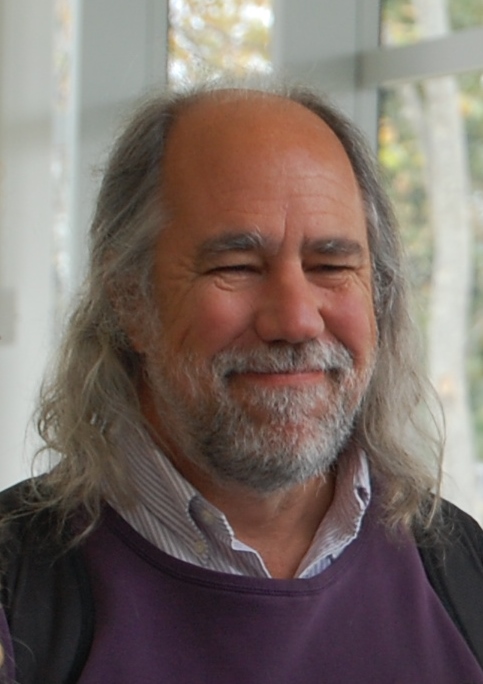“The function of good software is to make the complex appear to be simple.”
Attributed to Booch in: Frank H. P. Fitzek et al. (2010) Qt for Symbian. p. xv
Гради Буч — американский специалист в области программной инженерии, руководитель исследований в IBM Research, IBM Fellow с 2003 года. Гради Буч наиболее известен как создатель унифицированного языка моделирования UML, который он разработал совместно с Иваром Якобсоном и Джеймсом Рамбо.
Wikipedia

“The function of good software is to make the complex appear to be simple.”
Attributed to Booch in: Frank H. P. Fitzek et al. (2010) Qt for Symbian. p. xv
Источник: Object Solutions: Managing the Object-Oriented Project. (1996), p. 39; as cited in: Journal of Database Management. Vol 10-11. p. 33
Grady Booch (2006) " On design https://www.ibm.com/developerworks/community/blogs/gradybooch/entry/on_design?lang=en" cited in: Frank Buschmann, Kevlin Henney, Douglas C. Schmidt (2007) Pattern-Oriented Software Architecture, On Patterns and Pattern Languages. p. 214
Источник: Object-oriented design: With Applications, (1991), p. 37
Источник: Object-oriented design: With Applications, (1991), p. 19
“A class is a set of objects that share a common structure and a common behavior”
Источник: Object-oriented design: With Applications, (1991), p. 513
Grady Booch (1986) Software Engineering with Ada p. 220. cited in: David J. Gilmore et al. (1994) User-Centred Requirements for Software Engineering Environments. p. 108
Источник: Object-oriented design: With Applications, (1991), p. 56: Booch is citing: Cox, B. 1986. Object-Oriented Programming An Evolutionary Approach. Reading, MA: Addison-Wesley, p. 69.
“The entire history of software engineering is that of the rise in levels of abstraction.”
Grady Booch in his talk "The Limits of Software."; Cited in: Gerry Boyd (2003) " Executable UML: Diagrams for the Future http://www.devx.com/enterprise/Article/10717." published at devx.com, February 5, 2003.
The Limits of Software
Источник: Object-oriented design: With Applications, (1991), p. 37
The computer scientist leaned back in her chair, smiled, and then said confidently, "Ah, but who do you think created the chaos?"
Источник: Object-oriented design: With Applications, (1991), p. 2
Источник: Object-oriented design: With Applications, (1991), p. 116
Grady Booch (2011) " The Computing Priesthood https://www.ibm.com/developerworks/community/blogs/gradybooch/entry/the_computing_priesthood?lang=en" on ibm.com/developerworks/community/blogs/gradybooch. November 14, 2011
James Rumbaugh, Ivar Jacobson, & Booch (1999) The Unified Modeling Language Reference Manual. p. 1
The Limits of Software
Источник: Object Solutions: Managing the Object-Oriented Project. (1996), p. 277
Grady Booch (2003-04-03) in interview "Grady Booch polishes his crystal ball", IBM
Источник: Object-oriented design: With Applications, (1991), p. 54
Источник: Object-oriented design: With Applications, (1991), p. 34-35
Источник: Object-oriented design: With Applications, (1991), p. 124
Cited in: Gerry Boyd (2003) " Executable UML: Diagrams for the Future http://www.devx.com/enterprise/Article/10717." published at devx.com, February 5, 2003.
The Limits of Software
Источник: Object-oriented design: With Applications, (1991), p. 320
Источник: Object-oriented design: With Applications, (1991), p. 141
Источник: Object-oriented design: With Applications, (1991), p. 35
Attributed to Grady Booch in: Tarek M. Sobh (2008) Advances in Computer and Information Sciences and Engineering. p. 457
Grady Booch, Robert A. Maksimchuk, Michael W. Engle (2007) Object-Oriented Analysis and Design with Applications Chapter 6.
“Good people with a good process will outperform good people with no process every time.”
Источник: Object Solutions: Managing the Object-Oriented Project. (1996), p. 188 as cited in: Stefan Bergström, Lotta Råberg (2004) Adopting the Rational Unified Process: success with the RUP. p. 92
“An operation is some action one object performs upon another in order to elicit a reaction.”
Источник: Object-oriented design: With Applications, (1991), p. 80